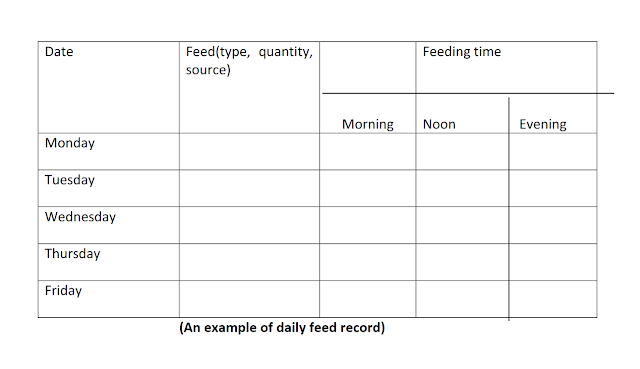CatFish health management
Health hazards to look out for in catfish farming
It is very important to look out for any little sign in your catfish to avoid large immortality of fish. There are symptoms to look out for, and immediately a symptom is noticed, the fish should be removed from the water and treated. There are many things that can disturb the fish like poor handling, poor water quality, bad feeding, poor feed quality, this can result to diseases for the fish which will decrease the activity in their immune system. Fingerlings and frys are most vulnerable as their immune system is yet to strengthen.
Fish diseases and some symptoms are:
Fish are static in a vertical position at the surface of the water or show a sluggish swimming position. White spots will be visible on the skin particularly, the mouth and fin. This is known as myxobacteria. In this case, antibiotics such as Chloramphencil, Terramycin or oxytetracycline is applied to the feeds per day for a period of 5- 15 days.
Saprolegnia is a catfish disease where cotton-like growths are on the skin, mouth and barbels. This fungus occurs when there is an injury on the skin caused by mishandling, or predators. Cotton like growths also occurs on the eggs which may cause high losses amongst eggs and larvae. In this case, fishes and eggs can be treated with malachite green oxalate which is added to the pond water. As a prophylactic treatment, eggs should be disinfected with escodyne for 5-10 mins within one hour of stripping.
Encapsulated larvae are present in tissues and non-encapsulated worms are found in the abdominal and pericardial cavity. This is caused by Nematode worms.
A broken head disease shows off a symptom of pop eyes, soft skull and sometimes, deformed caudal fins. The gradual destruction of the arborescence organs occur. The skull may finally break laterally, parallel to the joins of the skull plates. It is always advised in this case that polluted water and bad food quality should be avoided. The pond water should be drained, and the supply of food stopped for a while and replaced with feed rich in vitamins that are distributed in smaller quantities.
Open belly diseases occur when fingerlings stay in a vertical position at the surface of the water or are swimming actively with swollen bellies. The belly will expand and finally break open. This happens when fingerlings are raised in high densities on artificial feeds. Here, reduce the feeding routine and eliminate all the fish-bearing symptoms of the disease.
Catfish staying at a feeding spot too long could indicate that they were overfed or underfed. If as a farmer, you don’t have time to check your farm, feeding record must be tracked as soon as you have the time, this will help you decide if you should increase the feeding rate or if you should decrease it. Fishes usually spread out from their feeding spot to show satisfaction.
If fishes start having a movement that is sluggish, it may give off a sign of a disease. You should be fast enough to remove the fishes so to avoid spreading the disease to other fishes.
Restlessness in catfishes may be a sign of danger. Either an intrusion in your pond, or a sign of disease, either way, it is important to be observant, and know the cause of it.
If fishes are breathing on the surface, it may indicate overstocking and pollution, which will lead to exhaustion of dissolved oxygen in the pond. Mature fishes are able to breathe in water as well as make use of atmospheric energy through a well-developed respiratory system to meet oxygen needs for metabolic activity in its body.
Fish swimming seems bloated. They swim only on top of the water. There are noticeable white spot on the fin, particularly around the mouth.
Catfish rubbing their head or flanks over the pond bottom. Sometimes, the skin is covered by a greyish-white film.
Noticeable red-brown worm is present on skin and barbels. This can cause anaemia and stunted growth. This is often caused by leeches and often treated with Dipterex or masoten
Fingerlings stay in vertical position of the surface of the water or are swimming actively with a swollen belly. The belly may expand and finally opens. Decrease the feeding rate, check all the fingerlings and get rid of the fingerlings bearing that symptom.
Health management of fishes
Your fishes having a disease are not a good sign, it is always very important to note signs in fishes early. When a fish spread diseases to other fishes, there will be a high mortality rate and it will reduce profit for you. Control of catfish mortality is a strategic knowledge every catfish farmer must acquire. Mortality does not just occur, it must have causes or cause, in fact, keen observation is all you need to avoid your catfish dying. But here are some highlights you must keep to avoid fish mortality.
Always restore the freshness of your water. And ensure that the quality of the water entering your fish is not compromised. If you are not using an overhead tank, ensure to test the water coming in from rivers, or flood.
Give your fishes quality feed. Feeds may be costly and while negotiating the cost for your fish feed, you may be tempted to reduce the quality of the feed, at this point, it is very important to bear in mind that feed has the ability to affect the health of your fishes.
Always prepare your pond adequately by observing even the smallest detail in pond preparation.
Routine medication can be applied to reduce mortality. You can do this by adding mild drugs into your feed periodically. However, it is also very important that you don’t overdo the medication as they may become resistant to it and won’t respond to it when they are sick and the same medication is applied

Comments
Post a Comment